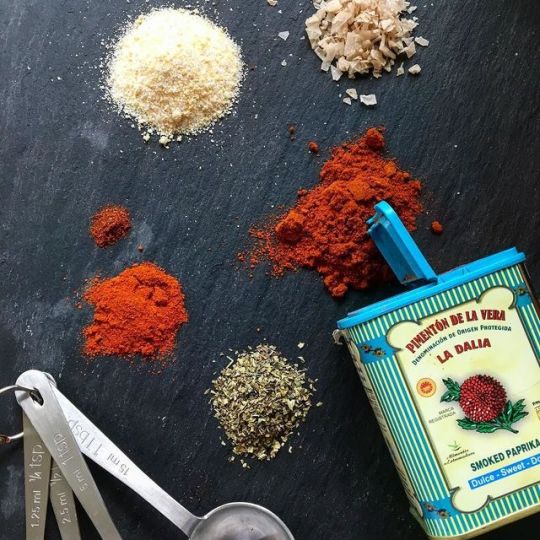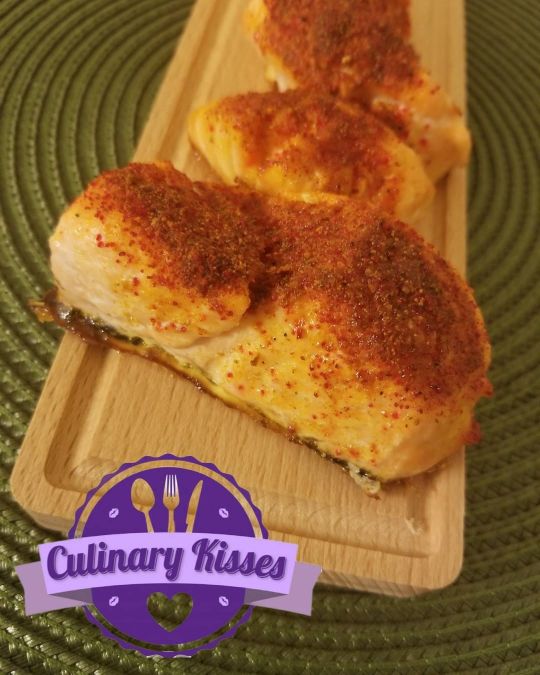#HomemadeSpiceMix
Text
HISTORY OF SPICES
The McCormick Science Institute (MSI) provides valuable insights into the historical and modern uses of herbs and spices, especially about health and culinary applications. Humans have co-evolved with plants for millions of years, discovering the flavorful and medicinal properties of herbs and spices. Initially, these natural ingredients were used to enhance the taste of food, mask undesirable flavors, and preserve perishable items. Spices have been valued throughout history for their various uses, from religious rituals to medicinal purposes. During biblical times, spices like cinnamon and saffron were highly regarded. In Ancient Egypt, garlic and onion were notable choices for both medical and culinary purposes, and the Ebers Papyrus from 1500 BC documented the use of various herbs. Early Chinese culture also recognized the power of herbs and spices, with the Classic Herbal, likely written around 2700 BC, containing information about medicinal plants, including cassia, which is similar to cinnamon. Ginger was also grown in pots and used to prevent scurvy during sea voyages. Ancient Mesopotamia, particularly Babylonia, had a rich tradition of spice and spices used for both culinary and medicinal purposes. King Ashurbanipal's records included various aromatic plants, while King Merodach-Baladan II grew numerous species of plants and herbs in his royal garden. India has a rich history of using spices such as black pepper, cinnamon, turmeric, and cardamom for culinary and health purposes. Ancient surgeons like Sushruta incorporated aromatic plants into medical practices. In ancient times, Greece and Rome imported and utilized a variety of Eastern spices. Hippocrates and Theophrastus contributed to the understanding of spices and herbs in medical science, while Dioscorides wrote "De Materia Medica," a comprehensive text on spices and herbs. The Arab and Muslim world played a significant role in the spice trade, using spices for both trading and scientific purposes. Arab physicians developed techniques to extract flower scents and essential oils from aromatic plants. During the Middle Ages, spices in Europe were highly prized and often used as currency. The Crusades opened up trade routes, making Asian spices more accessible. European apothecaries integrated spices and herbs into their remedies, often based on Arabian medical knowledge. Spices and herbs have played a significant role in human history, from early civilizations to the modern world. For instance, the Age of Exploration, including Marco Polo's accounts, contributed to the expansion of the spice trade. As a result, spices from the New World, such as capsaicin (red pepper) and allspice, were introduced to European cuisine. Moreover, American history saw early settlers incorporating indigenous spices and herbs into their diets. During the colonial and revolutionary periods, spices became an important part of American cuisine. In the present day, the usage of spices is diverse and widespread. They are commonly used in global cuisine, including astronaut food. Additionally, in recent years, there has been a renewed interest in the health benefits of spices. Scientific evidence supports their potential positive effects on heart health, cognition, and diet quality. To conclude, spices and herbs have been used for culinary enhancement as well as medicinal applications throughout history. Their continued exploration promises further health benefits. The McCormick Science Institute is a valuable resource for understanding the science behind the use of spices and herbs.
#herbs#Herbs#Seasonings#CookingWithSpices#FlavorfulHerbs#SpiceUpYourLife#HerbGarden#SeedSavers#SpiceWorld#KitchenEssentials#SpiceRack#Herbology#CookingFromScratch#SpiceBlend#GourmetCooking#HealthyEating#CulinaryHerbs#SeedStarting#HomemadeSpiceMix#CookingTips#and seeds.
1 note
·
View note
Photo

One of my favourite things for lunch is making up a chicken fajita mix with a bit of turmeric and paprika added on a spinach wrap 😍 . . . #healthycooking #healthyliving #healthyfood #fajita #chickenfajita #homemadespicemix #chicken #cumin #paprika #cayennepepper #cajunspice #turmeric #capsicum #springonion #onion #vegetable #chicken #homecookedmeal #homecooking #healthylifestyle #westernaustralia #weightlossjourney #cleaneating #perth #kewdale #australia #healthymeals #spices #healthyeatingideas #healthyfooddoesnthavetobeboring
#chicken#healthymeals#homecooking#cleaneating#capsicum#paprika#perth#fajita#kewdale#chickenfajita#healthyfood#australia#healthycooking#onion#healthyeatingideas#cajunspice#cayennepepper#homecookedmeal#turmeric#homemadespicemix#weightlossjourney#westernaustralia#healthyliving#cumin#healthylifestyle#spices#springonion#healthyfooddoesnthavetobeboring#vegetable
1 note
·
View note
Photo

Making fajita seasoning for tonight's dinner. Smoked paprika is one of my favourite ingredients ❤️ #diyfajitaseasoning #homemadespicemix #homecooking #paprika #fdblogger #instaspices #spicestagram http://ift.tt/2gzI7dx
0 notes
Photo

New Virtual Cooking Classes Available! Click the link to view the dates and menu, then register for the classes you want. Space is limited. Register TODAY! Click "Get Tickets" in our Bio to Register NOW! . . . . . #culinarykisses #ChefAngelaMichelle #foodandkisses #foodie #seasoning #seasonings #homemadeseasoning #spice #spices #spicemix #homemadespicemix #sauce #sauces #homemadesauce #howtoseasonfood #knifeskills #basicknifeskills #howtouseaknife #knifecare #cuttingskills #howtocut #howtocutvegetables #howtocutmeat #howtocutachicken #30minutemeals #plating #cookingchannel #masterclass #cookingclass #virtualcookingclass https://www.instagram.com/p/CAb62rWIjIK/?igshid=1fg8e5o4vrxhi
#culinarykisses#chefangelamichelle#foodandkisses#foodie#seasoning#seasonings#homemadeseasoning#spice#spices#spicemix#homemadespicemix#sauce#sauces#homemadesauce#howtoseasonfood#knifeskills#basicknifeskills#howtouseaknife#knifecare#cuttingskills#howtocut#howtocutvegetables#howtocutmeat#howtocutachicken#30minutemeals#plating#cookingchannel#masterclass#cookingclass#virtualcookingclass
0 notes
Photo

I have some "new" spices from Zanzibar that inspired this salmon dish. Visit our blog, From the Catwalk to the Kitchen, for detailed info and the recipe. www.CulinaryKisses.com/blog Food & Kisses ❤ Chef Angela-Michelle . . . . . #culinarykisses #ChefAngelaMichelle #foodandkisses #foodie #seasoning #seasonings #homemadeseasoning #spice #spices #spicemix #homemadespicemix #homemadesauce #howtoseasonfood #30minutemeals #plating #cookingchannel #masterclass #cookingclass #virtualcookingclass #salmon #howtocooksalmon #zanzibar #africa #africanspices #cookingwithspices https://www.instagram.com/p/B8hlyuIFFqI/?igshid=2hom1c7khibf
#culinarykisses#chefangelamichelle#foodandkisses#foodie#seasoning#seasonings#homemadeseasoning#spice#spices#spicemix#homemadespicemix#homemadesauce#howtoseasonfood#30minutemeals#plating#cookingchannel#masterclass#cookingclass#virtualcookingclass#salmon#howtocooksalmon#zanzibar#africa#africanspices#cookingwithspices
0 notes